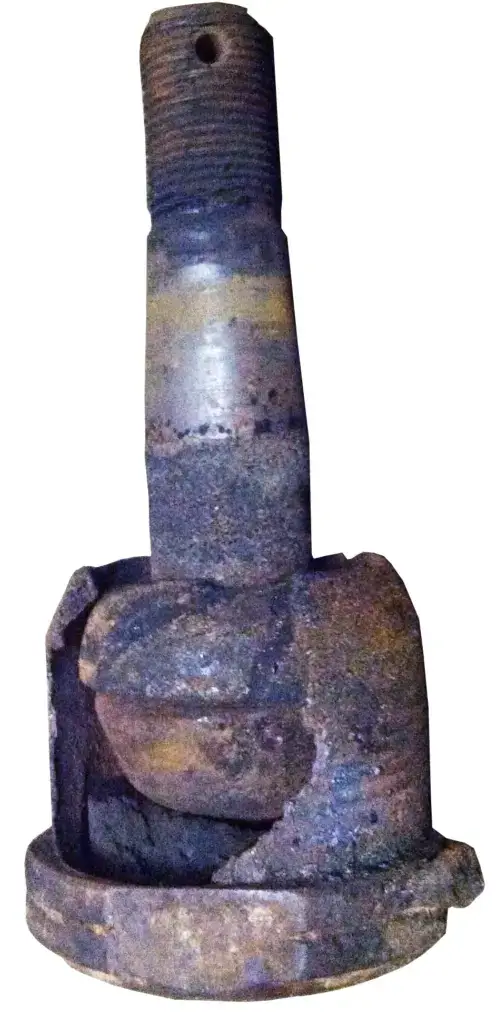What does a ball joint do and how long do they last
Ball joints are flexible joints that allow the wheels to turn left and right and move up and down.
This post has been updated. Click here to see the most recent post
In many ways, a ball joint’s ball and socket design is similar to that of a hip joint where the hip can rotate around the ball in multiple directions. A ball joint consists of a ball and a socket as well. The joint allows the front wheel to turn left and right while simultaneously moving up and down.
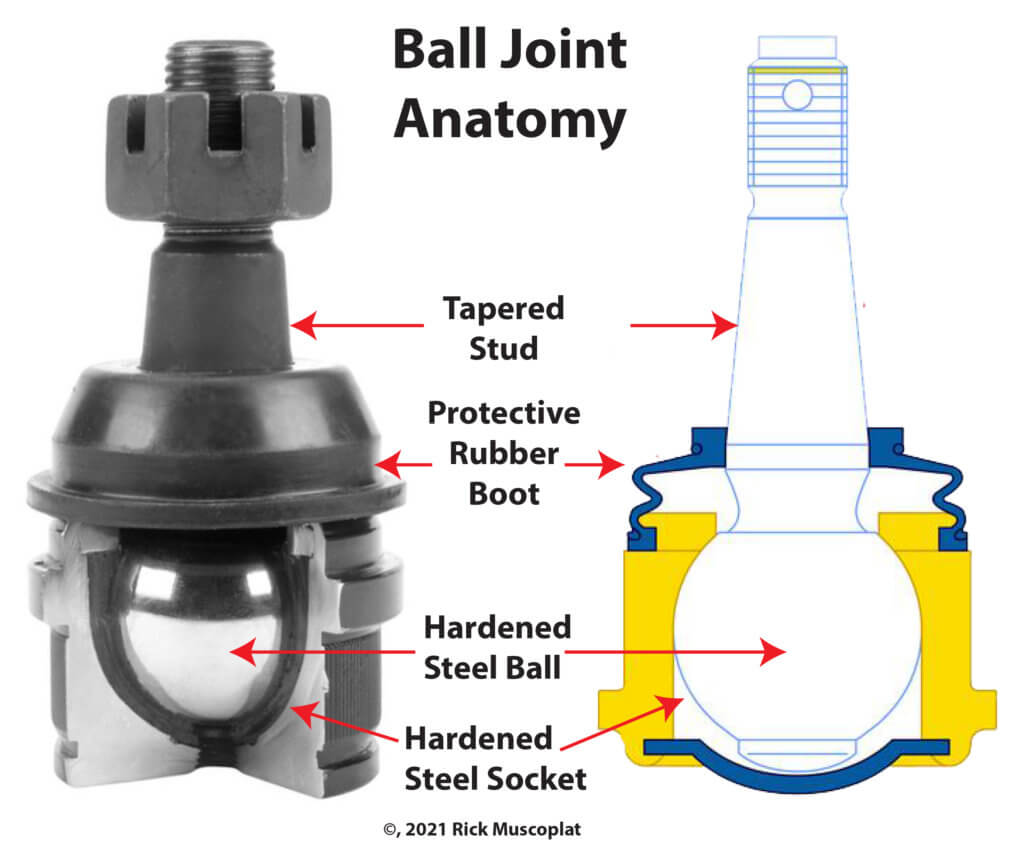
As you can see in this picture, the joint consists of a hardened steel ball with a tapered stud. The stud connects to the steering knuckle.
There’s also a socket, which is connected to the control arm.
Finally, there’s a rubber boot that keeps grease in and dirt and debris out.
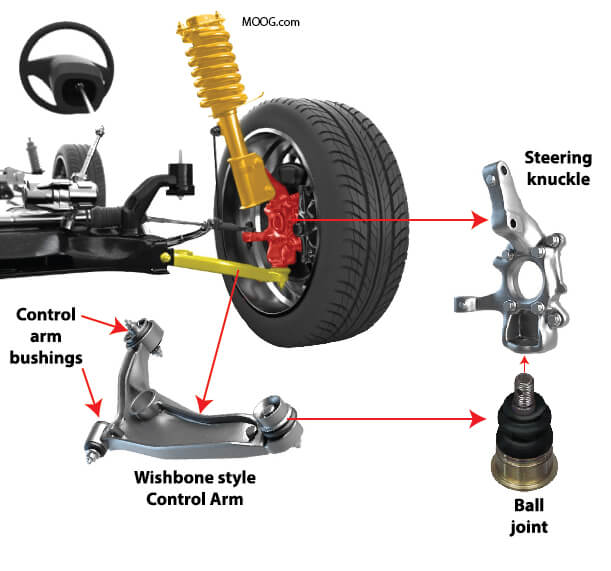
Where a ball joint is located on a vehicle
How many ball joints are on a vehicle?
The number of joints depends on the type of suspension used in the vehicle. A McPherson strut suspension, for example, has two joints; one on each front lower control arm.
A conventional short/long arm (SLA) suspension, the kind used on most pickup trucks, has four joints; one on each of the two upper and one on each of the two lower control arms.
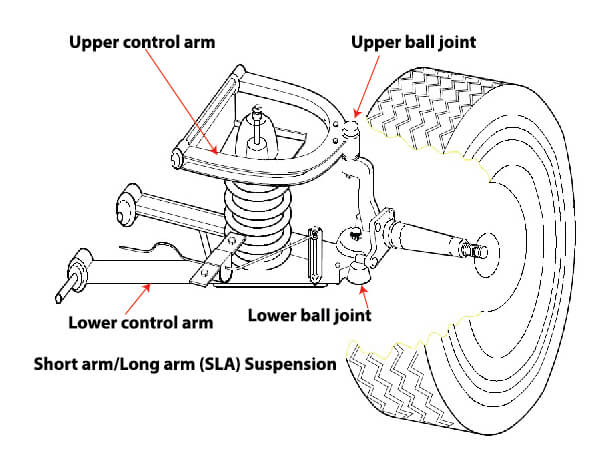
Short arm/Long arm (SLA) suspension system showing upper and lower ball joints
Most vehicles don’t have them on the rear suspension
How long they last
Even though they’re packed with grease, they still wear out. Generally speaking, ball joints last 120,000 to 150,000 miles on cars and 70,000 to 120,000 miles on trucks.
However, these four factors can reduce joint life:
• Poor road conditions in your area
Bumpy roads, potholes, or driving on gravel all cause added movement and shock to the ball and socket inside the joint, reducing its life.
• How much load you carry
Carrying heavy loads dramatically reduces joint life
• How well you maintain your tires and alignment
Driving on worn out shocks or struts and driving on over-inflated tires causes the tires to bounce more and that reduces joint life.
• Vehicle design
Some vehicles are known for wearing out ball joints much faster than others. On those vehicles, there’s nothing you can do to extend joint life
Symptoms of a worn joint
• Clunk or rattling noise when going over bumps. As the joint wears, excess clearance develops between the ball and socket. As the wheel moves up and down, the ball-and-socket clearance can produce a knock or clunk when hitting a road bump or speed bump.
• Creaking noise when turning. This is a sign of a completely dry joint, where there’s no lubrication between the ball and the socket. That metal-to-metal contact quickly wears out the joint.
• Vibration while driving. Since the ball joint serves as the anchor point for the steering knuckle, any excess clearance will result in movement as the vehicle travels down the road. This type of vibration can normally be felt in the steering wheel.
• Steering wander. Again, since the “anchor point” has excessive clearance it can’t maintain steering input. That causes the vehicle to follow road input rather than driver input. In that case, the vehicle can drift to the left or right on its own, even with driver correction.
• Uneven tire wear. In extreme cases, a worn ball joint can cause uneven tire wear.
Can you drive on a worn joint?
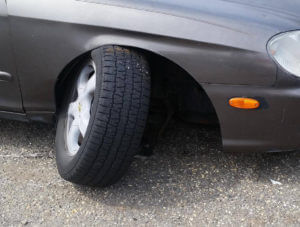
This is what happens when a ball joint fails. The control arm disconnects from the steering knuckle and the tire buckles under the vehicle.
I don’t recommend driving on worn ball joints. As the wear increases the chances of the ball popping out of the socket increases. If the bottom or top portion of the steering knuckle detaches from the control arm, the entire wheel assembly can fold under the vehicle or tilt out from the top, causing catastrophic failure including death.
©, 2017 Rick Muscoplat
Posted on by Rick Muscoplat
